Lesson Plan April 15, 2019
Poetry Workshop: Writing in Response to Images
Grades:
1. Workshop Description
2. Model Poems and Discussion: Exploring photo stories and student poems written in response to them.
3. Group Practice: Writing an ekphrastic poem together as a class.
4. Writing Your Ekphrastic Poem: Choosing a photo and writing in response. (Includes writing prompts.)
5. Suggested Photos and Accompanying Texts
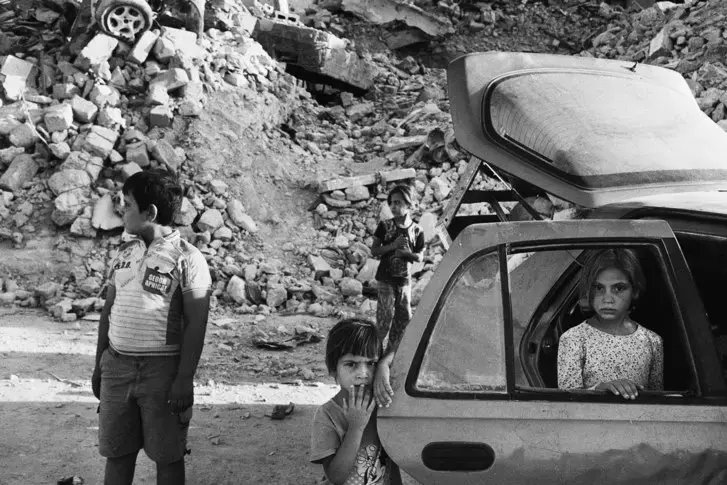
Printable PDFs/Word Documents for this Workshop:
Workshop Description:
You've probably heard that "a picture is worth a thousand words." There are also a thousand ways to interpret a picture. How can you use poetry to illuminate the many possible interpretations of an image, and/or to give voice to your own interpretation? How can powerful photography and poetry, together, be used to make personal connections with global issues and to highlight the world's under-reported stories?
In this workshop, we will write ekphrastic poems based on powerful photography from global news stories. By doing so, we will explore the stories photos tell, make personal connections to those stories, and amplify under-represented voices while making our own voices heard.
Vocabulary:
- Ekphrastic poem: A poem that responds to a work of visual art—generally a painting, sculpture, or photograph. Ekphrasis is a Greek word that translates to description, but contemporary ekphrastic poems usually go beyond description to speak to or from the perspective of the artwork/its subject(s). Find examples of ekphrastic poems here.
- Photojournalism: Photography that tells a true story.
- Under-reported story: A story that isn't typically featured in major news headlines, or otherwise doesn't receive the attention it deserves.
Model Poems and Discussion:
1. Choose one of the following photo stories to explore:
- "Venezuela's Days of Upheaval" by Natalie Keyssar
- "Too Young to Die: Shedding Light on Chicago Gun Violence" by Carlos Javier Ortiz
- "Finding Home: A Year in the Life of a Refugee in Europe" by Lynsey Addario
2. In small groups or as a class, look at the photos without reading the captions. What themes emerge? What feelings do the photos evoke? Write them down. Then, read the captions. Does the added information change or add to your list. Finally, discuss with a partner: How can the themes present in these photos connect with your life?
3. Read the poem that corresponds to the photo story you explored. These poems were written by K-12 students and selected as winners or finalists for the 2018 Fighting Words Poetry Contest.
- "Ayúdame" by Miranda Rodriguez, 9th grade, Staples High School, CT
- "Summer in Chicago" by Emmy Song, 10th grade, Montgomery Blair High School, MD
- "Discovering Home" by Amelia Ferrari, 6th grade, DC International School, DC
4. Discuss as a class:
- What language in the poem jumps out to you as beautiful or interesting? What poetic devices (such as rhythm, repetition, or metaphor) do you notice?
- What evidence of the poem's connection to the photo story can you identify?
- What does the poem add that is not already present in the photo story?
- Look back at the list you made in step 2. Does the poet explore one or more of the themes or feelings you wrote down? Did you write down more themes or feelings that the poet did not explore?
Group Practice: Writing an Ekphrastic Poem
Ekphrastic poems can help us see how many different ways an image can be interpreted. Let's work together to observe closely and diversify our perspectives on the following photograph from Natalie Keyssar's photo story, "Venezuela's Days of Upheaval."
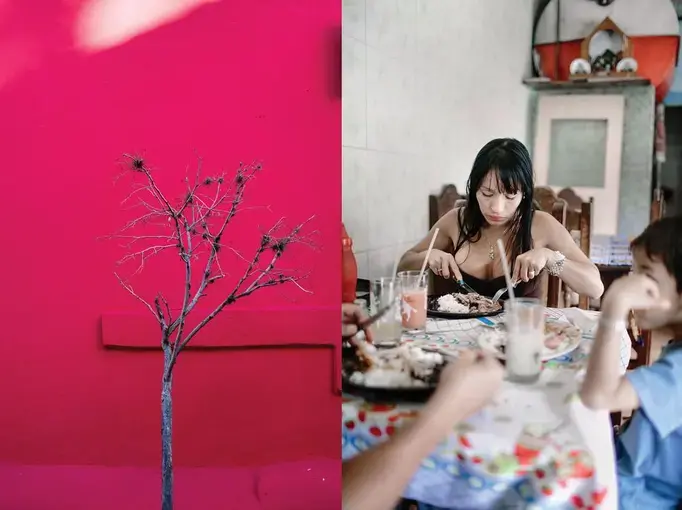
1. After examining Natalie Keyssar's photo, read this statement she made on her photojournalism project:
Since Hugo Chávez died in March 2013, Venezuela has spiraled into crisis. The new president, Nicolás Maduro, has struggled to hold together the socialist coalition his predecessor formed.
Shortages in food, electricity, and medicine have led to riots; crime has spiked the already astronomically high murder rate; meteoric inflation, corruption, and price controls have caused the cost of some basic necessities to skyrocket.
"This work is about inequality," says photographer Natalie Keyssar, "and a level of tension and sometimes danger so powerful in daily life it's almost palpable." Her photos also capture a pivotal moment for "an egalitarian dream in a country that had the natural resources to pursue that dream but now seems to be in danger of falling apart."
2. As a class, brainstorm the following:
- What are the themes present in this image?
- How can you connect with those themes?
- If you were using this photo to write an ekphrastic poem, what perspectives could you write from? (Remember: you do not have to write from the perspective of a person, nor does the perspective you write from need to be featured in the poem; it may be a historical figure's, an outside observer's, or your own.) Come up with as many as possible.
3. What themes, feelings, or details in the photo resonate most with you? What or who is absent from the photo? Together, we will create an ekphrastic poem in the form of a list.
- Write: Each person will be responsible for contributing two lines to the group poem, following this pattern:
- "Portrait of ___." (person, object, theme, feeling, metaphor in the photo).
- "Not a portrait of ___." (person, object, theme, feeling, metaphor not in the photo).
- Share: Each person should read their two lines aloud, moving quickly around the room until everyone has shared. Together, these titles form an ekphrastic poem, and demonstrate the possibility of interpreting an image from many perspectives and/or describing an image in many different ways.
Writing Your Ekphrastic Poem:
1. Select the photo / themes with which you connect most. Read the photo's caption and as much of the accompanying text as possible to get some background in the story the photo is telling. See the end of this lesson for suggested photos and accompanying texts.
2. Brainstorm the perspectives from which you could write your poem. Choose one, and then choose 1-2 themes you want to explore from this perspective.
3. Write your poem! The only requirement is that your poem respond to the photo you chose by engaging with its story, themes, and/or visual content. Need help to get started? Try one of these approaches:
- Start by describing the photo. In addition to visual description, tell your reader about the smells, the sounds, the textures. Then, take us beyond the frame: what lies there? What isn't pictured?
- Choose a small detail in the photo, and write from its perspective. What is it doing in the photo? What is its history? What does it have to say about the themes of the photo at large?
- Return to the group exercise, writing in couplets (rhymed or unrhymed) that follow the pattern: "Portrait of _____." / "Not a portrait of _______." Write at least seven sets of couplets.
Suggested Photos and Accompanying Texts:
'Who Is This Stupid God?': The Filipino Catholic Church in Crisis
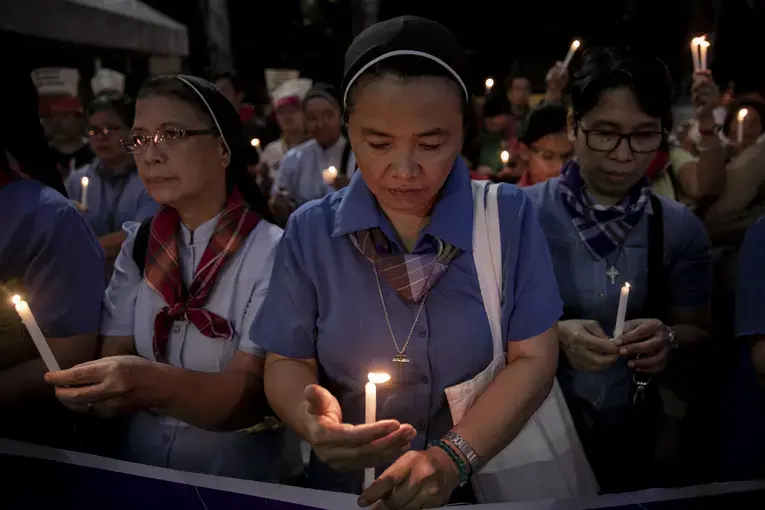
Monks Protest Dam to Protect Cambodian Forest
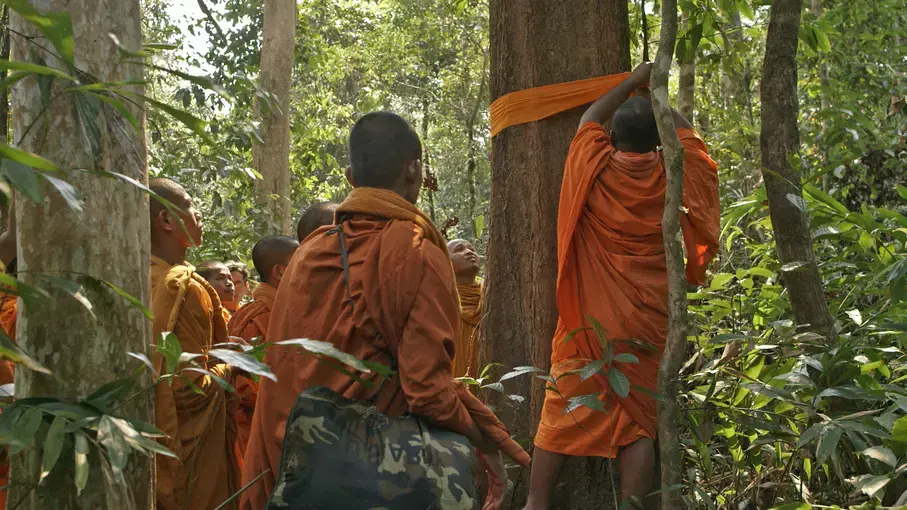
The Ordinary People Keeping the Peace in Nigeria's Deadly Land Feuds

Rabwah: Home to Pakistan's Minority Ahmadi Muslims

The Redemption of MS-13

Caste Follows 'Like a Shadow'

Tibet Is Going Crazy for Hoops
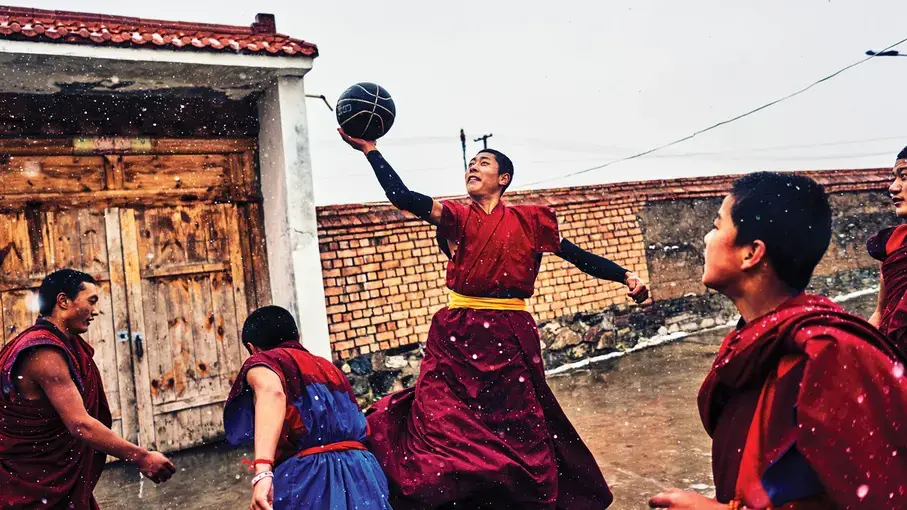
Will LGBT Ugandans Ever Be Free? Inside the Fight for a Queer Country
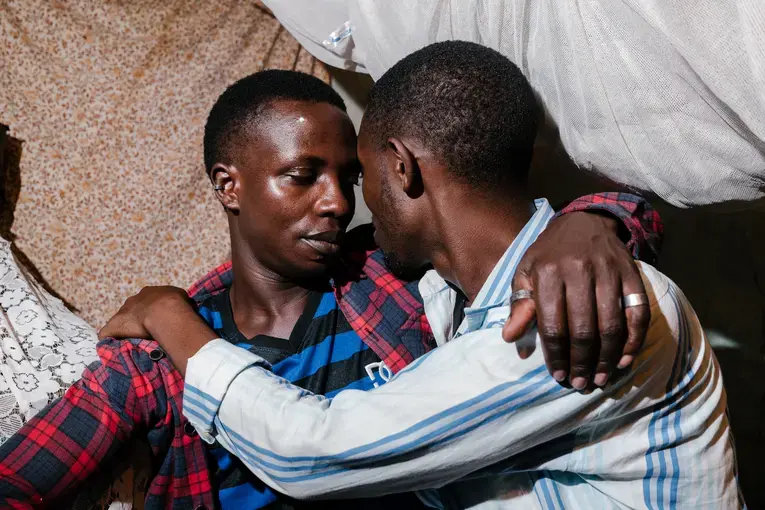
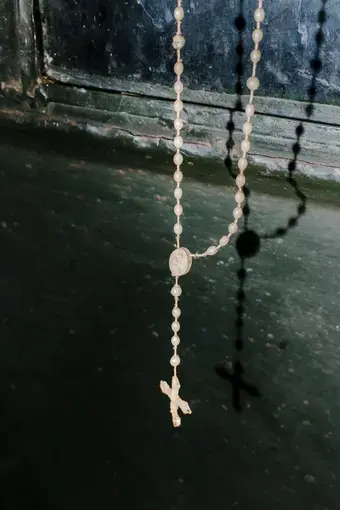
A crucifix hangs at the safe house of Children of the Sun, a group that shelters at-risk and in-need LGBTQ persons. Though activists say religion has exacerbated and inflamed homophobic violence in Uganda, many in the LGBTQ community are themselves deeply religious. Image by Jake Naughton. Uganda, 2017.
Iraq's Post-ISIS Campaign of Revenge
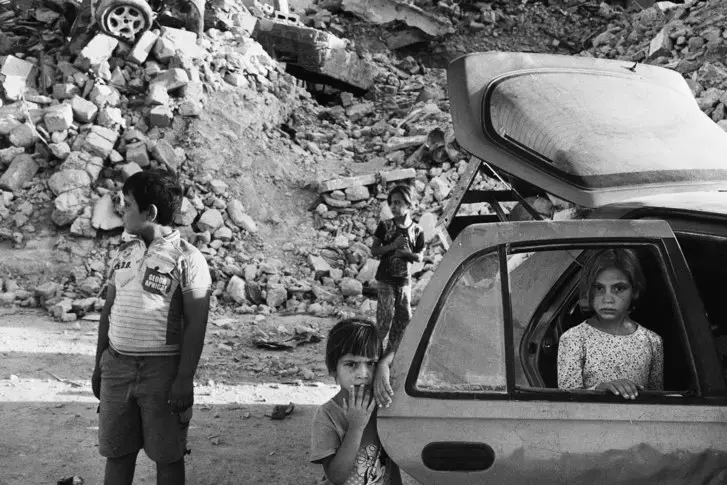
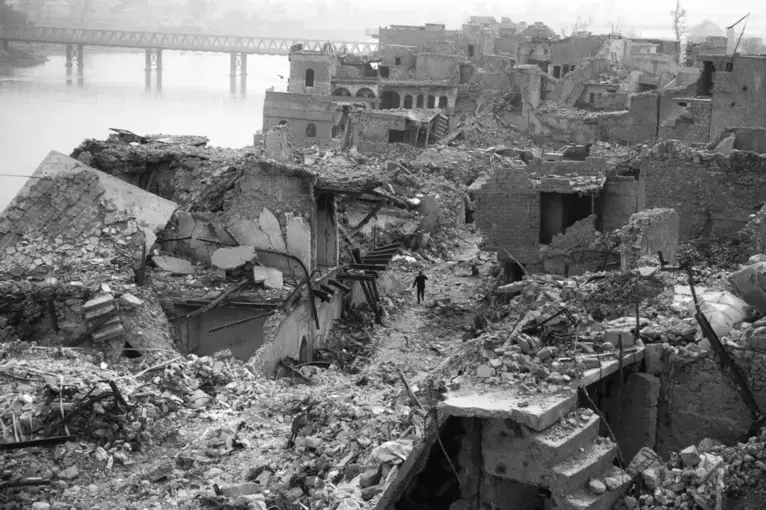
Inside the Dark, Opulent World of Ghana's Churches


Muslim Youth in Paris: Navigating Identity

Shame: HIV/AIDS and the Church in Jamaica
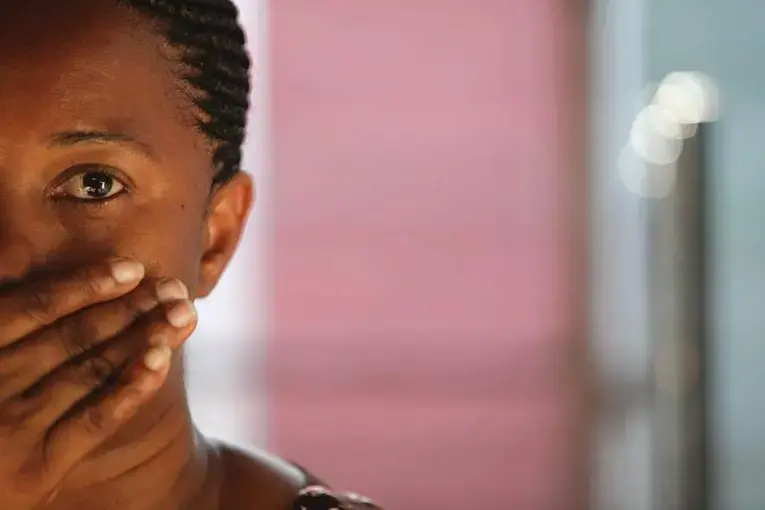
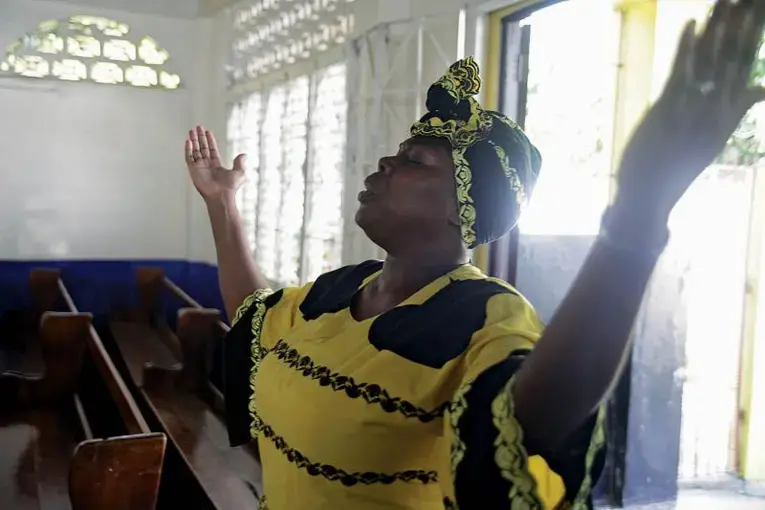
Suggested Photos and Accompanying Texts: These photos and texts were selected for use in a workshop centered on reporting related to religion. Any Pulitzer Center photography may be used for other workshops.
